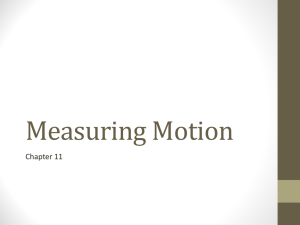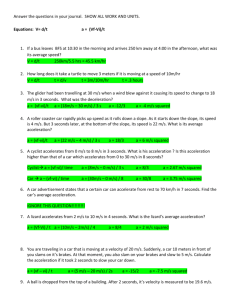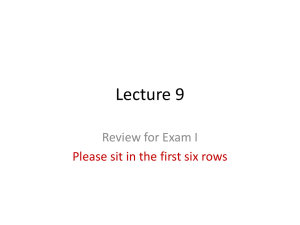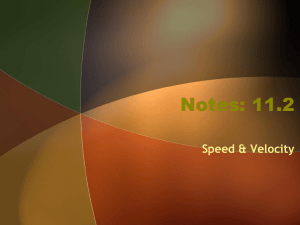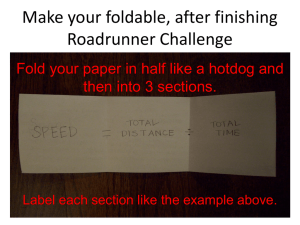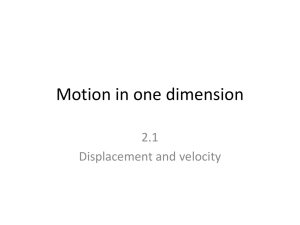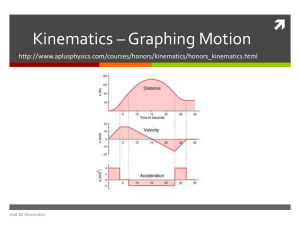Equation of Motion
advertisement
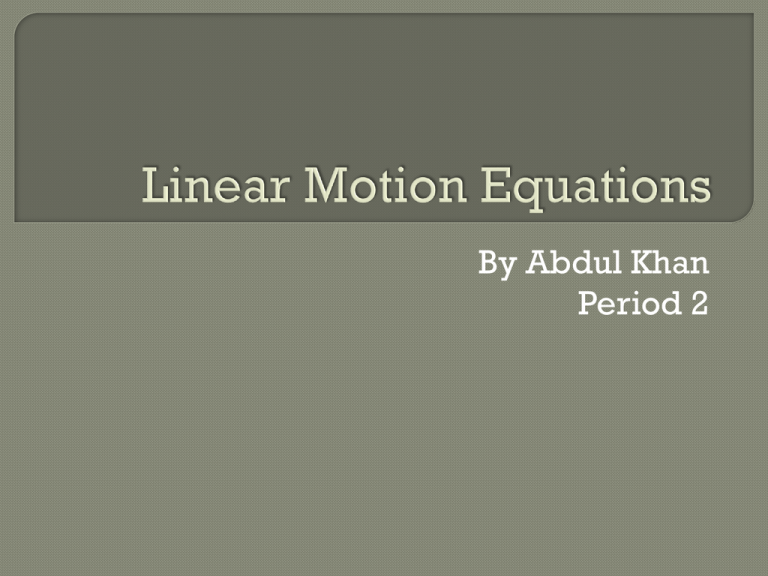
By Abdul Khan Period 2 Change in position; Can be positive or negative, depending on direction; ∆x = Xf – Xi change in position equals final position minus initial position; Displacement and distance traveled are not the same thing; ∆x = f-i :-10-0 = -10 f= -10 ∆x=f-i :10-0=0 i=0 Average Velocity = Change in position/change in direction; V-avg = ∆x/ ∆t = (xf-xi)/(tf-ti); Velocity is not the same as speed, velocity has direction; Average velocity and instantaneous velocity are not the same thing either. Put time on the x-axis; Put displacement on the y-axis; The slope of the line is ∆x/ ∆t so the slope is velocity: x ∆x ∆t y Acceleration is the rate of change in velocity with respect to time Aavg = ∆v/∆t = (v -v )/(t -t ) Notice how this form looks similar to that of velocity (∆x/∆t) Just as the slope of x vs. t is velocity, the slope of v vs. t is acceleration. f i f i d = displacement (∆x) t = time of travel (∆t) a = rate of constant acceleration v = initial velocity v = final velocity i f ā = ∆v / ∆t = (Vf-Vi)/(Tf-Ti); a/1=(Vf-Vi)/t; at=Vf-Vi; atVvi=Vf; Vf=Vi+at (equation # 1) v = ∆x/ ∆t; ∆x=d, ∆t=t, V =1/2(vi+vf); ½(Vi+Vf)=d/t; t/2(Vi+Vf)=d or ½((Vi+Vf)t (equation # 2). Vf=Vi+at #1 into ½((Vi+Vf)t d = ½(Vi + at + Vi)t d = ½(2Vi + at)t d = (Vi + ½at)t (equation # 3) Vf= Vi +at; Vf-Vi=at; (Vf-Vi)/a=t. (i) D=1/2(Vi+Vf)/[(Vf-Vi)/a]; D=[(Vi+Vf)(Vf-Vi)]2a; D=(VfVi+Vf^2-Vi^2VfVi)/2a D=(Vf^2-Vi^2)/2a 2ad=Vf^2-Vi^2 Vf^2=2ad+Vi^2 (equation # 4).

